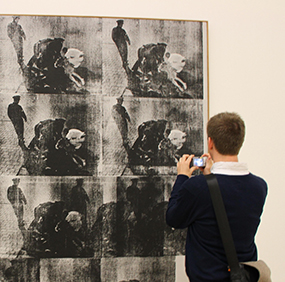非常抱歉,
你要访问的页面不存在,
非常抱歉,
你要访问的页面不存在,
非常抱歉,
你要访问的页面不存在,
验证码:

职称:Assistant Professor
所属学校:Wake Forest University
所属院系:Department of Art
所属专业:Art History, Criticism and Conservation
联系方式:(336) 758-5080
John Curley (Duke University, A.B.; Yale University, Ph.D) teaches courses in twentieth and twenty-first century American and European art, as well as the history of photography. His research explores the ways that postwar art in both the United States and Europe intervenes into larger realms of visuaity, the mass media, and politics, especially during the period of the Cold War. These concerns are addressed in his first book: A Conspiracy of Images: Andy Warhol, Gerhard Richter, and the Art of the Cold War, published by Yale University Press in fall 2013. He has also published essays on Willem de Kooning, Lothar Baumgarten, and on World War II photography in Life magazine and was a contributor to the catalogue of the international exhibition Warhol: Headlines (National Gallery of Art, Washington). His new project, Objects in the Age of Pop, reconsiders American and European sculpture of the early 1960s. His research has been supported by the Getty Research Institute, the Yale Center for British Art, and the Deutscher Akademischer Austauschdienst (DAAD), among others.
John Curley (Duke University, A.B.; Yale University, Ph.D) teaches courses in twentieth and twenty-first century American and European art, as well as the history of photography. His research explores the ways that postwar art in both the United States and Europe intervenes into larger realms of visuaity, the mass media, and politics, especially during the period of the Cold War. These concerns are addressed in his first book: A Conspiracy of Images: Andy Warhol, Gerhard Richter, and the Art of the Cold War, published by Yale University Press in fall 2013. He has also published essays on Willem de Kooning, Lothar Baumgarten, and on World War II photography in Life magazine and was a contributor to the catalogue of the international exhibition Warhol: Headlines (National Gallery of Art, Washington). His new project, Objects in the Age of Pop, reconsiders American and European sculpture of the early 1960s. His research has been supported by the Getty Research Institute, the Yale Center for British Art, and the Deutscher Akademischer Austauschdienst (DAAD), among others.